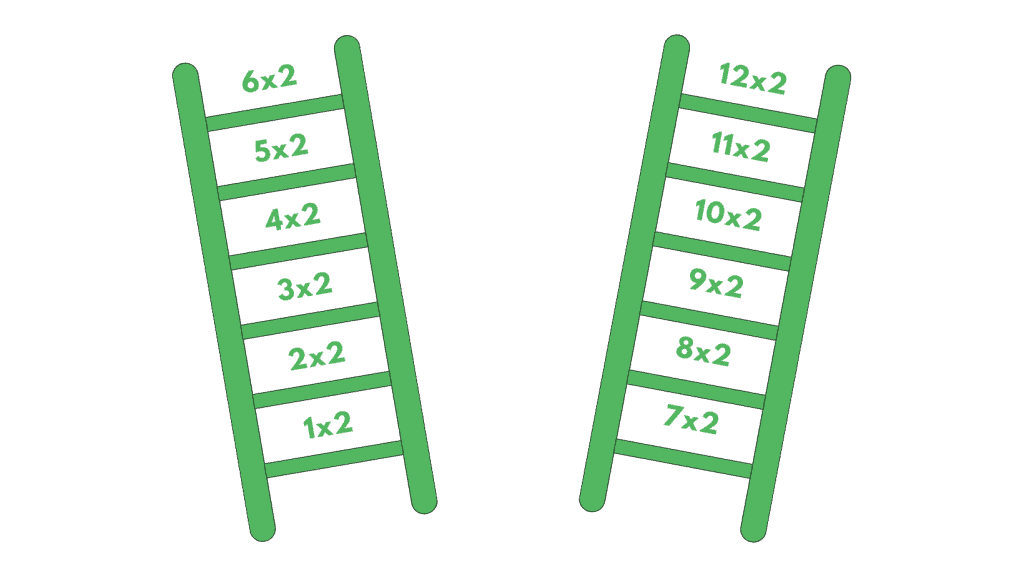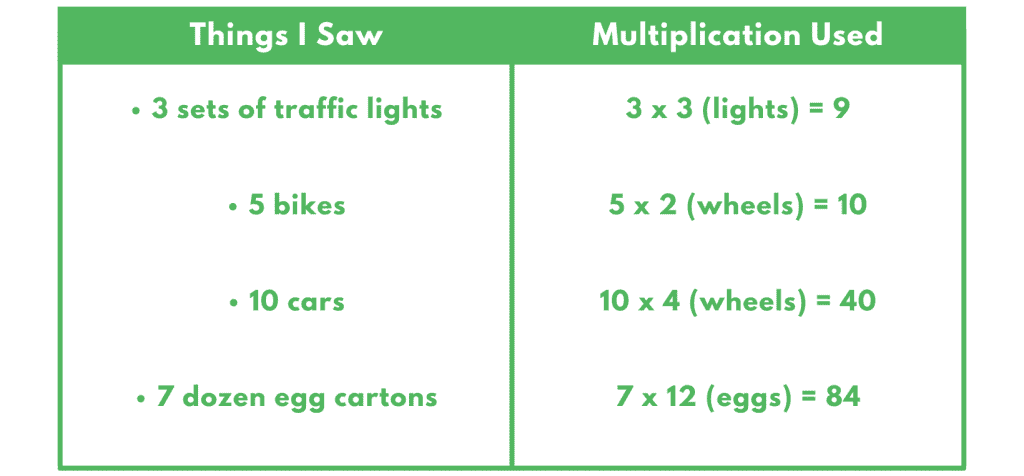Times tables are seen as a fundamental maths concept to know — and for good reason, as they can help children work out complex maths issues easily, understand quantities and solve issues. So what’s the best way to teach your child their times tables?
It’s important to realise that this skill is challenging for many students. They may not like practising tables and it also involves rote learning, which is different to a lot of early schooling. If you find yourself in need of extra help, get in touch with our K-12 tutors in Kirribilli, Sutherland Shire and across broader Sydney!
With all this in mind, we are going to break down three simple strategies, which we’ve coined as the “three Ts” making it easier for you to remember with helping your child master their times tables. Let’s jump in!
Strategy #1: Technique
Strategy #2: Time
Strategy #3: Team Work
Strategy #1: Using Effective Techniques to Teach Times Tables
One of the most important elements of teaching times tables is ensuring that you have great technique to teach your child efficiently.
This doesn’t mean that you need to be a stellar teacher or understand everything about rote learning. You just need to adopt and develop varied strategies to assist your child.
Up and Down Ladder
A great way to visualise times tables and solidify them in your child’s mind is through creating times table ladders. When we visualise particular systems, we are more likely to remember them and use them in our lives.
The ladder can work in several ways. First, make a physical ‘ladder’ (drawing it on a big piece of butcher’s paper will work well.
Have your child write their times tables without the answer on the ladder rungs in ascending order. Lay the ladder on the floor so your child can step on it.
This way, they can ‘climb the ladder’ and they learn their times tables and improve. Not only does this help to visualise as we talked about, but it creates positive reinforcement as they get to explore the ladder. You can make different ladders for each set of tables!
Start by getting your child to say times tables forwards (eg. 2×2, 3×2… 12×2) and then move backwards (12×2, 11×2… 2×2).
Once your child seems to have the basics, you can start moving them up and down the ladder at random (eg. 3×2, 9×2). This will ensure that they understand what they are learning and can apply it to different scenarios.
Skip Counting
Another great way to learn is skip counting. This technique simplifies multiplication, making it more accessible for many children to learn.
It will help your child understand how groupings of certain numbers work and to form patterns in their own minds about multiplication. Though this isn’t the end result of learning times tables, it can be a really great start!
There are several ways to teach skip counting, depending on your child’s learning needs and style.
For visual or early learners, you can encourage your child to use an abacus and count by twos, fours, elevens — whatever tables they are learning. This can also work well with money for times tables that have the appropriate amounts (e.g. 5 times tables with 5 cent coins). You may even allow your child to keep the coins at the end as a reward.
Want to turn it up a notch? Skip counting can be done with literal skipping! For kinaesthetic learners, having something tactile to do as they complete tasks can lead to better understanding and stronger memory. If you’ve noticed that your child learns well through-hand on tasks, this may be a great activity.
For more auditory learners, songs such as this one can be great for skip counting! You can find many other variations on YouTube that may suit your child’s needs.
Times Tables Circles
A final technique, which can be great for solidifying knowledge, is times tables circles. These can help to make connections in the times tables and create patterns for children. They’re a great way to solidify different sequences.
Times tables circles also create a written activity for students. Your child will be able to use worksheets they fill in for later revision.
Strategy #2: Taking Time Into Consideration when Teaching Times Tables
After you’ve got the techniques down, it’s onto our second strategy! First, it’s important to remember that times tables skills aren’t going to rapidly develop overnight.
Like any other rote learning skill, your child will need to practise effectively and consistently. Let’s talk more about this.
Long-term time
Though the timeline is disputed, a lot of research suggests that it takes about 20 hours to learn a basic skill. We count times tables as one of these. Of course, your child is unlikely to spend a whole hour learning times tables per day (and as we will discuss, this isn’t the most effective form of learning either).
Therefore, you can estimate that most children will know at least the basics of times tables within a couple of months.
It’s important to remember that each child is very different. Your child may learn their times tables far more quickly than this — great!
If they don’t, it’s probably not something to worry about. Knowing times tables isn’t a sign of intelligence. It’s often not even a good indication of numeracy skills.
Instead, it’s a great skill for improving maths abilities but ultimately comes down to counting and rote learning. Keep practising.
Short-term time
Some experts suggest that a child’s attention span is about two to three minutes per year of their age. For example, an eight year old will have about 16 to 24 minutes of attention given to a topic.
This suggests why many people recommend short sessions of learning for young children. Practising times tables for a focussed 15-20 minutes a day will be more effective for your child’s learning than asking them to take on long, drawn-out portions of learning.
It’s also good to play to your child’s usual routine. If homework is done between 4-5pm, slot times tables into this segment. Don’t try to do them before bed when your child is winding down, or in the morning when they are rushed for school.
Strategy #3: Teamwork
Our final ‘T’ is just as important as the others. Teamwork means working with your child and those around you to make times tables part of everyday life! Let’s discuss some examples.
Teach Times Tables Through Daily Life Activities
Once your child has a decent understanding of their times tables, it’s great to begin bringing the tables into daily life.
This has several benefits. First, it means that your child is regularly practising their tables and will be more likely to remember them.
It also helps generate tangible connections between times tables and the real world. This stresses the importance of learning multiplication and can help your child feel like their practice has value.
You might like to point out multiples of the same house as you drive, or how three two dollar coins make six dollars.
You can also create a chart like this one, which your child can add to as they make multiplications in the real world.
Working with Family
Our final tip is to get your family or close friends involved in teaching your child times tables! When they see them, they will be able to use times tables in everyday life just like you have been doing.
They may also be able to offer techniques and advice to your child!
There you have it!
Now you’ve finished reading this article, you should have a great understanding of how to teach your child their times tables! Using our three Ts, you will be well-equipped to give many different techniques a go and find what works best for your family.
Searching for other ways to make maths fun for your child? Have a read of our article here!
Looking for some extra help with Maths for your child?
We have an incredible team of tutors and mentors!
We offer tutoring and mentoring for students in Years K-12 in a variety of subjects, with personalised lessons conducted one-on-one in your home or at one of our state of the art campuses in Hornsby or the Hills! You can also get support for your child with one of our incredible Maths tutors in Penrith.
We’ve supported over 8,000 students over the last 11 years, and on average our students score mark improvements of over 20%!
To find out more and get started with an inspirational tutor and mentor, get in touch today or give us a ring on 1300 267 888!
Lucinda Garbutt-Young hopes to one day be writing for a big-shot newspaper… or maybe just for a friendly magazine in the arts sector. Right now, she is enjoying studying a Bachelor of Public Communication (Public Relations and Journalism) at UTS while she writes on the side. She also loves making coffees for people in her job as a barista, and loves nothing more than a sun shower.






